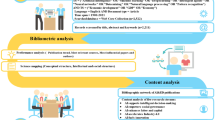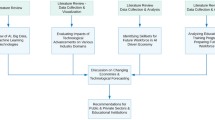Abstract
Patents are used as an indicator to assess the growth of science and technology in a given country or area. They are being examined to determine research potentials of research centers, universities, and inventors. The aim of this study is to map the past and current trends in patenting activities with a view to better understanding and tracking the changing nature of science and technology in Iran. The patenting activity in the Iran was investigated for the period 1976–2011, based on the USPTO, WIPO, and EPO (Esp@cenet). We analyzed the affiliation of inventers and collected patents which have at least an Iranian inventor. The collected data were analyzed applying Microsoft Excel. Analytical results demonstrate that between 1976 and 2011, 212 patents have been registered by Iranian inventors in the three above-mentioned databases. The average number of Iranian patents registered per year has increased significantly from 25 in 1976–1980 period to 119 in 2006–2011. It was noted that the highest number of registered patents (27 %) were in “chemistry, metallurgy” area of International Patent Classification (IPC), followed by “human necessities” (18 %), “electricity” (17 %), and “performing operations; transporting” (15 %). Overall, it can be concluded that patent-activities are highly country-specific, the results indicate that Iran is focused on “chemistry, metallurgy” technology.


Similar content being viewed by others
References
Abbott, F. M. (2007). Intellectual property rights in world trade. In A. T. Guzman & A. O. Sykes (Eds.), Research handbook in international economic law (pp. 444–484). Northampton: Edward Elgar Publishing.
Archibugi, D. (1992). Patenting as an indicator of technological innovation: a review. Science and Public Policy, 19(6), 357–368.
Archibugi, D., & Pianta, M. (1992). The technological specialization of advanced countries. Report to the EEC on international science and technology activities. Boston: Kluwer.
Basberg, B. L. (1984). Patent statistics and the measurement of technological change: an assessment of the Norwegian patent data, 1840–1980. World Patent Information, 6(4), 158–164.
Bhattacharya, S. (2007). Delineating the patent data: a case study of prolific patenting institutions of India and China. DESIDOC Bulletin of Information Technology, 27(1), 87–95.
Braun, T., Glanzel, W., & Grupp, H. (1995). The scientometric weight of 50 nations in 27 science areas, 1989–1993. Part I. All fields combined, mathematics, engineering, chemistry and physics. Scientometrics, 33(3), 263–293; Part II. Life Sciences, Scientometrics, 34(2), 207–237.
Bregonje, M. (2005). Patents: a unique source for scientific technical information in chemistry related industry? World Patent Information, 27(4), 309–315.
Chen, D.-Z., Chang, H.-W., Huang, M.-H., & Fu, F.-C. (2005). Core technologies and key industries in Taiwan from 1978 to 2002: a perspective from patent analysis. Scientometrics, 64(1), 31–53.
Comanor, W. S., & Scherer, F. M. (1969). Patents statistics as a measure of technical change. Journal of Political Economy, 77(4), 392–398.
European Commission (1997). European report on science and technology indicators (REIST) 1997. Retrieved September 29, 2011 from http://cordis.europa.eu/indicators/publications.htm.
European Commission (2003). Third european report on science and technology indicators 2003. Retrieved September 29, 2011 from http://cordis.europa.eu/indicators/publications.htm.
Ganguli, P. (2004). Patents and patent information in 1979 and 2004: a perspective from India. World Patent Information, 26(1), 61–62.
Griliches, Z. (1990). Patent statistics as economic indicators: a survey. Journal of Economic Literature, 28(4), 1661–1707.
Grupp, H., Lacasa, I. D., & Schmoch, U. (2003). Tracing technological change over long periods in Germany in chemicals using patent statistics. Scientometrics, 57(2), 175–195.
Guan, J., & He, Y. (2007). Patent-bibliometric analysis on the Chinese science—technology linkages. Scientometrics, 72(3), 403–425.
Kung, M. H., & Lin, H. Y. (2003). The dynamics of innovation in Taiwan: the patent analysis respective. In: S. C. H. Paul (Chair), International Conference on Industrial Science and Technology Innovation: Policy Issues and Challenges in a Critical Era, Taipei, Taiwan, 2003.
Leydesdorff, L., & Meyer, M. (2010). The decline of university patenting and the end of the Bayh–Dole effect. Scientometrics, 83(2), 355–362.
List, J. (2010). An A to X of patent citations for searching. World Patent Information, 32(4), 306–312.
Meyer, M. (2002). Tracing knowledge flows in innovation systems. Scientometrics, 54(2), 193–212.
OECD (1994). The measurement of scientific and technological activities using patent data as science and technology indicator—patent manual. Paris: OECD.
Parent, A., Bertrand, F., Côté, G., & Archambault, E. (2003). Scientometric study on collaboration between India and Canada, 1990–2001: phase 1 of the 2004 Canada–India S and T mapping study. Prepared for: Departments of Foreign Affairs Canada, International Trade Canada, and Industry Canada. Science-Metrix 2003. Retrieved September 29, 2011 from http://www.science-metrix.com/pdf/Science-Metrix_Canada-India_Collaboration_Report.pdf.
Pavitt, K., & Patel, P. (1988). The international distribution of determinants of technological activities. Oxford Review of Economic Policy, 4(4), 35–55.
Ramani, S. V., & De Looze, M.-A. (2002a). Country-specific characteristics of patent applications in France, Germany and the UK in the biotechnology sectors. Technology Analysis and Strategic Management, 14(4), 457–480.
Ramani, S. V., & De Looze, M.-A. (2002b). Using patent statistics as knowledge base indicators in the biotechnology sectors: an application to France, Germany and the UK. Scientometrics, 54(3), 319–346.
Schmookler, J. (1962). Economic sources of inventive activity. The Journal of Economic History, 22(1), 1–20.
Schmookler, J. (1966). Invention and economic growth. Cambridge: Harvard University Press.
Schmookler, J. (1972). Patents, invention and economic change. Cambridge: Harvard University Press.
Van Zeebroeck, N., Van Pottelsberghe de la Potterie, B., & Han, W. (2005). Issues in measuring the degree of technological specialisation with patent data. No. 05-016. RS, Working Papers CEB from ULB—Universite Libre de Bruxelles, April 2005. Retrieved September 29, 2011 from http://econpapers.repec.org/paper/solwpaper/05-016.htm.
WIPO (2011). International Patent Classification (version 2011)—guide. Guide to the IPC (2011). Retrieved September 29, 2011 from http://www.wipo.int/export/sites/www/classifications/ipc/en/guide/guide_ipc.doc.
Wu, Y.-C. J., & Liu, H.-P. (2006). Technological innovation assessment of business-to-business electronic marketplaces. Journal of the American Society for Information Science and Technology, 57(8), 1093–1104.
Acknowledgments
The authors would like to thank the anonymous reviewers for their valuable comments that helped to improve the paper.
Author information
Authors and Affiliations
Corresponding author
Rights and permissions
About this article
Cite this article
Noruzi, A., Abdekhoda, M. Mapping Iranian patents based on International Patent Classification (IPC), from 1976 to 2011. Scientometrics 93, 847–856 (2012). https://doi.org/10.1007/s11192-012-0743-4
Received:
Published:
Issue Date:
DOI: https://doi.org/10.1007/s11192-012-0743-4




